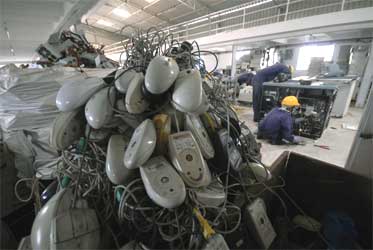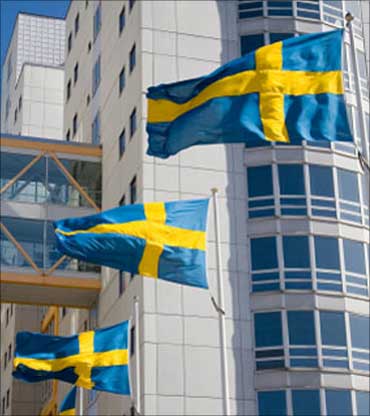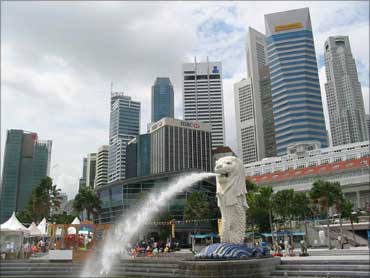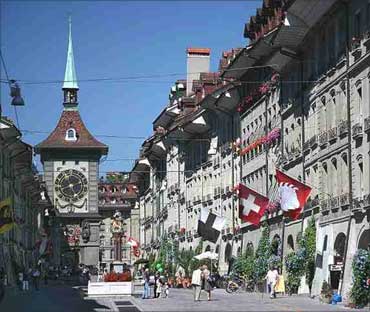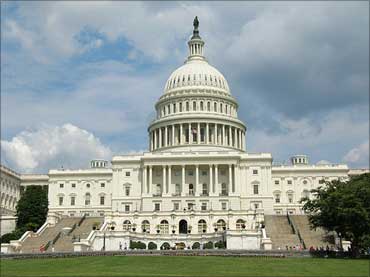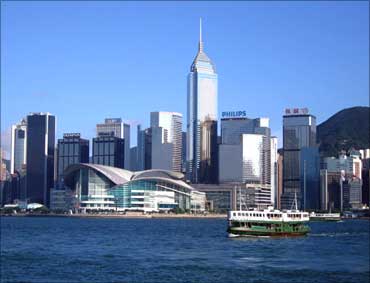 | « Back to article | Print this article |
Now, India is more network ready than ever
As the world continues to recover from the worst financial crisis of the decade, information and communication technologies will increasingly play prominent role as a key enabler of renewed and sustainable growth.
Encouraging signs of recovery have appeared in early 2010 in many countries across the world, spearheaded by emerging markets such as China and India, which achieved healthy GDP growth rates in 2009.
The Network Readiness Index, published by the World Economic Forum, also highlights the same trend.
Even though Europe remains one of the most networked regions of the world, with 12 economies ranked among the top 20 best performers, China and India leapfrogged another 9 and 11 places to 37th and 43rd, respectively.
Click on NEXT to read about India...
Now, India is more network ready than ever
Significant improvements across the board helped India to move from 54th (in 2009) to 43rd position this year.
India, the report said, benefited the most from the new method of computing telecommunication costs, which boost the performance in the individual readiness pillar (7th).
While business readiness remained high (23rd), India progressed in the market environment pillar, in which it now ranks 35th, up from 50th.
However, India is unlikely to pursue its fast-paced rise in the rankings unless it addresses some critical shortcomings having to do partly with the sheer size of its market.
Infrastructure, said the report, at 83rd remains inadequate to support optimal ICT usage in the country, which is ranked a dismal 109th for individual usage, notably:
- For mobile telephony (29.36 per 100 population, 116th),
- PCs (3.18 per 100 population, 93rd),
- Internet (4.38 per 100 population, 113th), and
- Broadband Internet (0.45 per 100 population, 96th).
The report also noted that India has insufficient number of telephone lines (3.21 per 100 population, 106th), few secure Internet servers (98th), poor Internet bandwidth (107th), and low tertiary education enrollment rates (11.85 per cent, 100th).
Click on NEXT to read how China fares...
Now, India is more network ready than ever
China too moved up nine places to 37th position. It tops the lower-middle-income country group, ahead of Tunisia and Jordan.
China is the biggest exporter of products from creative industries when measured as a share of total world exports in these products (18.19 per cent), and a major exporter of high-tech products (27.62 per cent of GDP, 8th).
Moreover, China ranks an impressive 9th in the individual readiness pillar.
By June 2009, the number of netizens in China reached 338 million. The country was ranked number 1 in the world with a penetration rate higher than the global average of 25.5 per cent. The number of broadband users reached 93.48 million, also the largest worldwide.
By September 2009, the number of telephone users in China reached 1.04 billion, of which 320 million were fixed lines users and 720 million were mobile subscribers - the biggest number worldwide.
Yet there remains considerable room for improvement in a number of dimensions, notably in the environment component (57th), displaying overregulated markets, high taxation (123rd), and poor financial market sophistication (78th), among others.
Also key to ICT penetration and optimal use, both hard and soft infrastructure (70th) suffers from serious shortcomings.
Click on NEXT to find out about the top 10 nations...
Now, India is more network ready than ever
Sweden: Rank 1
Sweden is the world's most networked economy for the first time since the Index's inception in 2001.
The country's showing is outstanding across the board: 1st, 4th, and 3rd for environment, readiness, and usage, respectively.
Sweden displays the best and second-best infrastructure and regulatory environments in the world, with comprehensive and efficient hard infrastructure, top-class human resources and education infrastructure, and an extremely friendly regulatory framework ensuring full protection of intellectual property (2nd) and providing for comprehensive ICT laws (4th).
The market environment is also assessed as being very ICT friendly at 5th place.
The stakeholders show an important degree of propensity and capacity to use ICT, notably businesses (3rd) and individuals (6th).
The extremely sophisticated and innovative Swedish business sector is also taking full benefit of ICT, ranking 1st in the world for the extent of business Internet usage.
Now, India is more network ready than ever
Singapore: Rank 2
Up two positions from last year, Singapore is placed 2nd as a result of one of the most impressive development strategies based on ICT and innovation.
The city-state ranks 1st in three of the nine pillars of the NRI (political and regulatory environment, individual readiness, and government readiness) and 2nd in government usage, reflecting the remarkable vision and role of the government in driving ICT penetration and leveraging ICT for economic and social modernisation and increased competitiveness.
Now, India is more network ready than ever
Denmark: Rank 3
After topping the rankings for three consecutive years, Denmark loses its networked readiness primacy, sliding to 3rd position, with what remains nonetheless one of the most solid performances within the 133 economies covered.
Denmark ranks 2nd for the quality of its environment and readiness, but scores lower in terms of ICT usage (11th).
The country features among the top 10 in all pillars but one (17th in business usage).
Denmark continues to display among the highest ICT penetration rates in the world (4th for individual usage), with notably widespread Internet (4th) and broadband Internet (3rd) usage.
Now, India is more network ready than ever
Switzerland: Rank 4
Over the years, Switzerland (4th) has evolved into an innovation powerhouse.
Switzerland ranks 23rd and 34th in terms of government readiness and usage, respectively - its two lowest showings among the nine pillars. Businesses appear to be at the forefront of ICT readiness (1st) and usage (2nd).
Switzerland also offers an extremely conducive environment for ICT development (4th).
Among the country's relative competitive weaknesses, telephony costs remain very high by international standards.
Switzerland ranks 84th and 62nd for mobile and fixed telephones tariffs, respectively.
Now, India is more network ready than ever
United States: Rank 5
Down two positions from last year, the United States is placed 5th.
The country boasts a very conducive ICT environment (10th) thanks to intensive competition, excellent infrastructure, and top-notch education.
The country ranks 2nd in ICT usage, with businesses (1st) and the government (4th) fully leveraging ICT.
Individual usage is somewhat less satisfactory at 16th, mainly as a result of a comparatively low mobile subscription penetration rate (72nd, with some 86.8 mobile telephone subscriptions per 100 population).
Now, India is more network ready than ever
Finland: Rank 6
Finland ranks 6th for the third consecutive year.
The country obtains excellent marks in both the environment subindex (5th) and readiness subindex (3rd), while results in the usage component (13th).
Now, India is more network ready than ever
Canada: Rank 7
Internet use in Canada is pervasive (11th, with 75.4 users per 100 population), and the country is second to none when it comes to PCs, with almost one computer per inhabitant.
On a less positive note, with 66.4 subscriptions per 100 population (93rd), Canada's mobile telephony penetration
rate remains by far the lowest among all advanced economies.
Now, India is more network ready than ever
Hong Kong: Rank 8
Another of Asia's star economies, Hong Kong (8th) improves four ranks and enters the top 10 for the second time.
The country displays the most conducive market environment for ICT in the world, owing to its developed financial sector, little taxation, and limited red tape.
Hong Kong excels in individual readiness (2nd behind Singapore) and individual usage, thanks to one of the densest levels of ICT diffusion in the world. Also impressive is the government's use of ICT (7th).
Now, India is more network ready than ever
The Netherlands: Rank 9
The Netherlands comes 2nd in the individual usage pillar, thanks to very high penetration rates.
Mobile telephony has become universal, with more than one subscriber per inhabitant. Internet penetration is the 3rd highest in the world, with 86.5 users per 100 population, over a third of whom have broadband access (4th).
It is therefore not a surprise that the country boasts the world's largest Internet bandwidth, equivalent to 78 kilobits per second per inhabitant.
There are about 91 PCs per 100 population (3rd).
Now, India is more network ready than ever
Norway: Rank 10
Norway delivers a convincing performance, led by an extremely conducive ICT environment (3rd), notably in its infrastructure component (4th).
Also individuals enjoy outstanding levels of ICT penetration (11th for individual usage).
